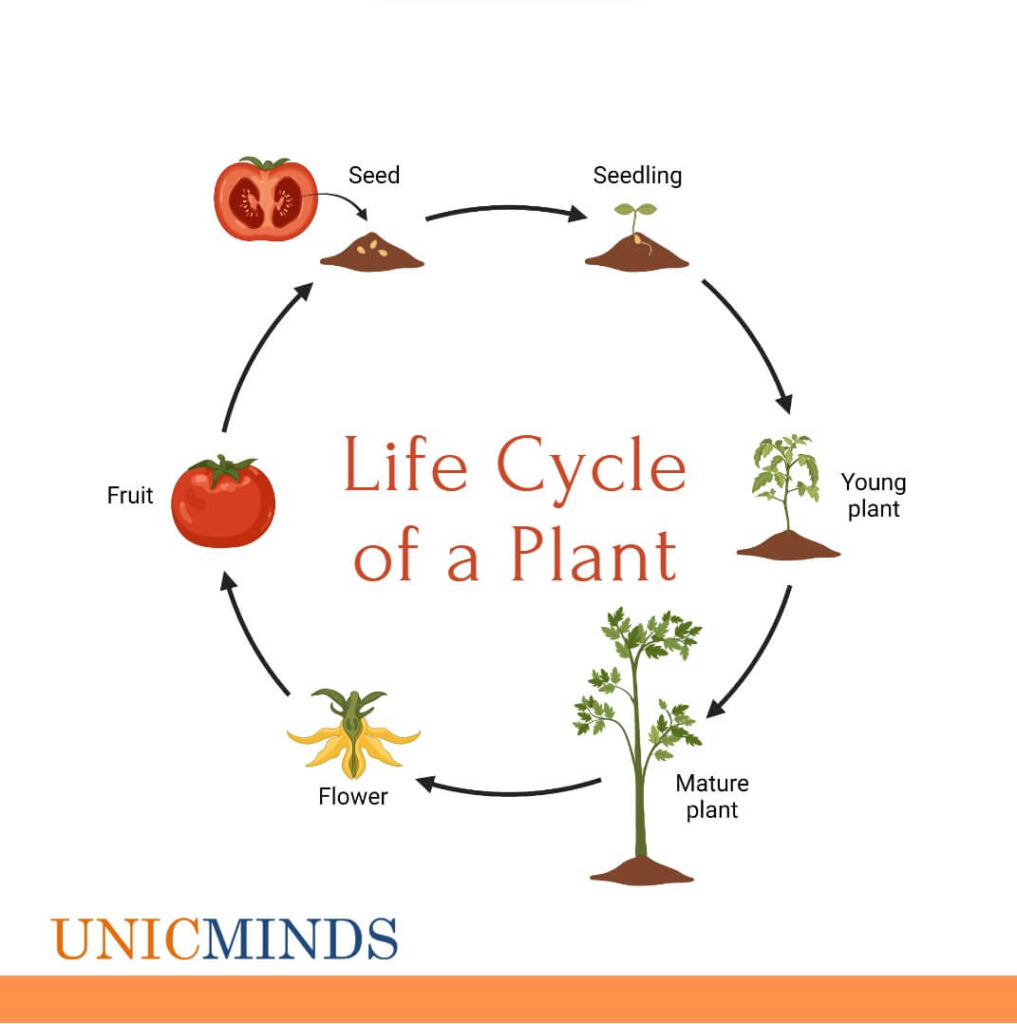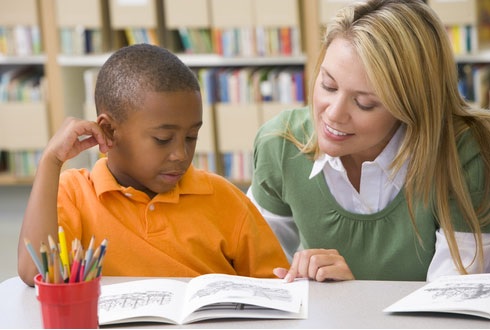Plant Life cycle is a series of changes that occur in the growth of a plant. Growth is the fundamental feature of all living organisms and we cannot escape growth. A plant life cycle consists of four growth stages; seed, sprout, small plant, and adult plant. When the seed gets planted into the soil with water and sun, then it will start to grow into a small sprout. When the sprout begins to grow roots that go deep into the ground and a stem that stretches through the soil, then the plant will start to grow leaves towards the sun. The sun helps the plant to produce food which it will need when it becomes a small plant. When the plant becomes an adult, then you will either see it bloom into beautiful flowers, fruits, or vegetables and possibly attract some pollinators, birds, or other creatures. Birds and other animals can spread the seeds around from the plant and start the process all over again.
Life Cycle of a Plant
1. Seed
The life cycle of a plant starts with its seed. It germinates and thrives if the conditions are favorable. For this reason, each variety of plants will have distinct methods of germinating. The embryo of the plant is contained within these seeds.
2. Germination
The germination phase occurs after the seed is at a location where the requirements for its birth are met. These essential ingredients are light, water, and heat, which vary depending on the plant. A few days after germination, the seed’s first radical will appear, expanding and developing like a common root, and the seed’s outer coat will peel away.
3. Seedling
When the plant begins to grow, it is in a stage known as “seedling”, The cotyledons (primordial leaves) are open, and the plumule develops, allowing the plant’s initial leaves to grow.
4. Increase
The plant life cycle is followed by continuous growth of the plant. The plant produces food to continue growing through a process is known as photosynthesis, and the capacity to do so is gained as the first leaves appear.
Life Cycle of Flowering Plants
Flowering plants are plants that produce flowers. Flowering plants go through several stages: Germination, Pollination, Fertilization, and Dispersal.
- Germination: This is the stage at which the plants begin to sprout from the seed. In this case, the seed’s root develops beneath the earth, while the upper body stem and leaves grow above it.
- Pollination: This occurs when pollen from one bloom is transferred to another flower of the same species by the wind, a butterfly, or an insect. Through this process, the anther of one plant is transferred to the stigma of another plant.
- Fertilization: Fertilization happens when pollens interact with the stigma of other flowers and go to the ovary, where they generate male and female gametes.
- Dispersal: Wind, animals, and water spread or scatter the seeds at this stage. These seeds germinate and grow into a new plant.
Download the plant life cycle class worksheet.
Hope this is useful, thank you.
You may like to read: What are Ecological Pyramids?, Algebra Practice Problems, and Soroban Classes for Kids.




